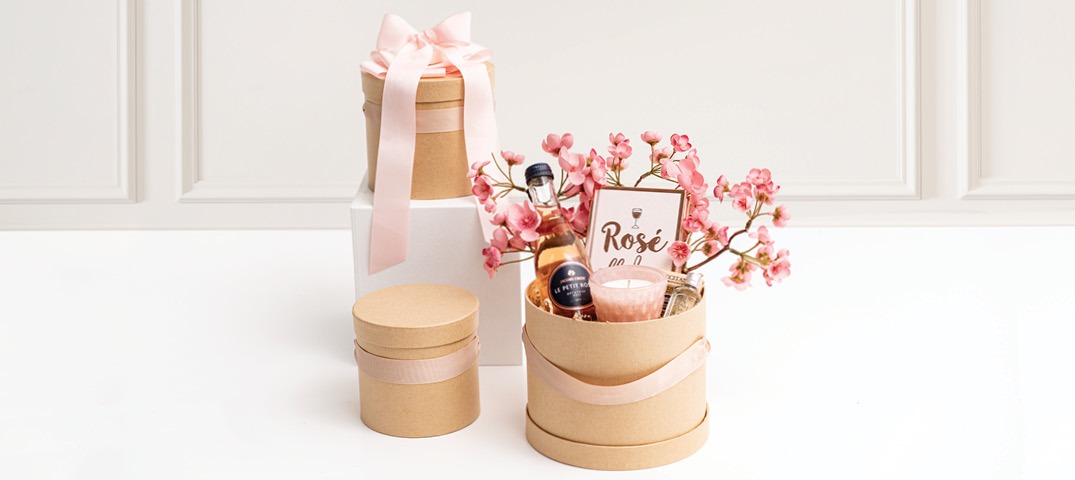Introduction
Hat boxes, often overlooked in contemporary fashion, have a rich history and an enduring charm. These elegant containers have served not only as functional storage solutions but also as symbols of sophistication and style. From their origins in the 19th century to their modern-day resurgence, hat boxes have been a staple in the wardrobes of the fashion-conscious and a collector’s delight. This article delves into the fascinating world of hat boxes, exploring their history, design evolution, practical uses, and cultural significance.
Historical Origins
The history of hat boxes dates back to the early 19th century when hats were an essential part of everyday attire for both men and women. During this period, headgear ranged from the elaborate bonnets of ladies to the top hats of gentlemen. With hats being such an important fashion statement, there arose a need to protect these often delicate and elaborately decorated accessories from damage.
The earliest hat boxes were simple, utilitarian objects made from sturdy materials like wood and leather. These early designs were primarily concerned with functionality, providing a secure and protective environment for hats during travel. As travel became more common with the advent of trains and steamships, the demand for reliable hat storage solutions grew, leading to innovations in the design and materials used for hat boxes.
Evolution of Design
Over time, hat boxes evolved from their purely functional origins into stylish and decorative items in their own right. The Victorian era saw the introduction of more ornate and luxurious hat boxes, reflecting the opulence and attention to detail that characterized the period. These boxes were often covered in fine leather, decorated with intricate metalwork, and lined with plush fabrics to ensure the utmost protection for their precious contents.
In the early 20th century, hat boxes became more standardized in terms of size and shape, coinciding with the mass production of hats. The materials used also diversified, with cardboard and papier-mâché becoming popular choices due to their light weight and ease of production. These boxes often featured bold, eye-catching designs and branding from milliners, making them not only practical but also a means of advertising.
The Art Deco movement of the 1920s and 1930s brought a new level of sophistication to hat box design. Sleek, geometric patterns, and luxurious materials like satin and velvet became common, reflecting the modernist aesthetic of the time. Hat boxes from this era are highly prized by collectors today for their distinctive style and craftsmanship.
Practical Uses
Hat boxes have always been valued for their practicality. Their primary purpose is to protect hats from damage caused by dust, moisture, and physical impact. This is particularly important for hats made from delicate materials like silk, straw, or felt, which can easily lose their shape or become stained.
For travelers, hat boxes provide a convenient way to transport headwear without compromising its condition. Vintage hat boxes often feature sturdy handles and secure closures, making them ideal for journeys by train, car, or even airplane. Some high-end models from the early 20th century even included compartments for gloves, veils, and other accessories, offering a comprehensive storage solution for the well-dressed traveler.
In addition to their primary function, hat boxes have found a variety of other uses over the years. They are often repurposed as stylish storage solutions for other items, such as scarves, jewelry, or keepsakes. Their distinctive shapes and decorative designs make them a popular choice for home decor, adding a touch of vintage charm to any space.
Cultural Significance
Hat boxes have played a notable role in popular culture and fashion history. In the early to mid-20th century, they were a symbol of luxury and sophistication, often associated with high society and glamorous travel. Iconic images of movie stars and socialites toting stylish hat boxes have cemented their place in the collective imagination.
One of the most famous cultural references to hat boxes is in the 1951 Disney animated film “Alice in Wonderland,” where the Mad Hatter’s eccentric personality is complemented by his collection of whimsical hats, each potentially stored in equally whimsical hat boxes. This association with whimsy and fashion highlights the dual nature of hat boxes as both practical items and objects of fantasy.
In contemporary fashion, hat boxes have experienced a resurgence in popularity, both as collectibles and as fashion accessories. Designers and brands have embraced the vintage appeal of hat boxes, reimagining them for modern consumers. High-end fashion houses often produce limited-edition hat boxes as part of their collections, offering a nod to the glamour of the past while catering to the tastes of today’s fashion-forward individuals.
Collecting Hat Boxes
For collectors, hat boxes offer a fascinating glimpse into the history of fashion and design. Vintage hat boxes are highly sought after for their historical value, craftsmanship, and unique aesthetic appeal. Collectors often seek out boxes from specific eras, brands, or designers, each representing a different chapter in the history of fashion.
When collecting hat boxes, there are several factors to consider. The condition of the box is paramount, as damage to the exterior or interior can significantly affect its value. Original labels, branding, and unique design elements also add to the desirability of a piece. Provenance, or the history of ownership, can further enhance the value of a hat box, particularly if it was owned by a notable individual or used in a significant context.
Modern-Day Hat Boxes
Today, hat boxes continue to be used for their original purpose of protecting and transporting hats, but they have also found new life in other areas. Many people use vintage or reproduction hat boxes as decorative storage solutions, adding a touch of elegance to their homes. The distinctive shapes and designs of hat boxes make them ideal for display, whether stacked on a shelf, used as a centerpiece, or incorporated into a themed decor scheme.
The fashion industry has also embraced hat boxes as part of its marketing and branding strategies. Luxury brands often produce hat boxes as part of their packaging for high-end hats and accessories, adding an extra layer of prestige to their products. These modern hat boxes are often designed with the same attention to detail and quality as their vintage counterparts, ensuring that they will be treasured for years to come.
DIY and Crafting with Hat Boxes
The timeless appeal of hat boxes has inspired a variety of DIY and crafting projects. Creative individuals have found numerous ways to repurpose and personalize hat boxes, transforming them into unique pieces of art or practical household items. Here are a few ideas for using hat boxes in DIY projects:
- Customized Storage Solutions: Personalize a hat box by covering it with decorative paper, fabric, or paint. Use it to store small items like sewing supplies, craft materials, or office supplies.
- Gift Boxes: A beautifully decorated hat box makes a memorable and reusable gift box. Fill it with goodies for a unique and elegant presentation.
- Photo Albums and Keepsakes: Create a memory box by filling a hat box with photos, letters, and other mementos. Decorate the exterior to match the theme of the contents.
- Planters and Floral Arrangements: Line a hat box with plastic and use it as a planter for small indoor plants. Alternatively, create a stunning floral arrangement by filling the box with foam and arranging fresh or silk flowers.
- Themed Decor: Incorporate hat boxes into your home decor for a vintage or themed look. Stack them to create a unique side table, or use them as a base for a lamp or other decorative item.
Conclusion
Hat boxes, with their rich history and timeless elegance, continue to captivate collectors, fashion enthusiasts, and creative minds alike. From their origins as practical storage solutions to their role as stylish accessories and decorative items, hat boxes have proven to be versatile and enduring. Whether you are a collector seeking a piece of fashion history, a traveler looking for a practical way to transport your hats, or a DIY enthusiast eager to create something beautiful, hat boxes offer endless possibilities. Their charm and functionality ensure that they will remain a beloved part of our cultural and fashion heritage for generations to come.

